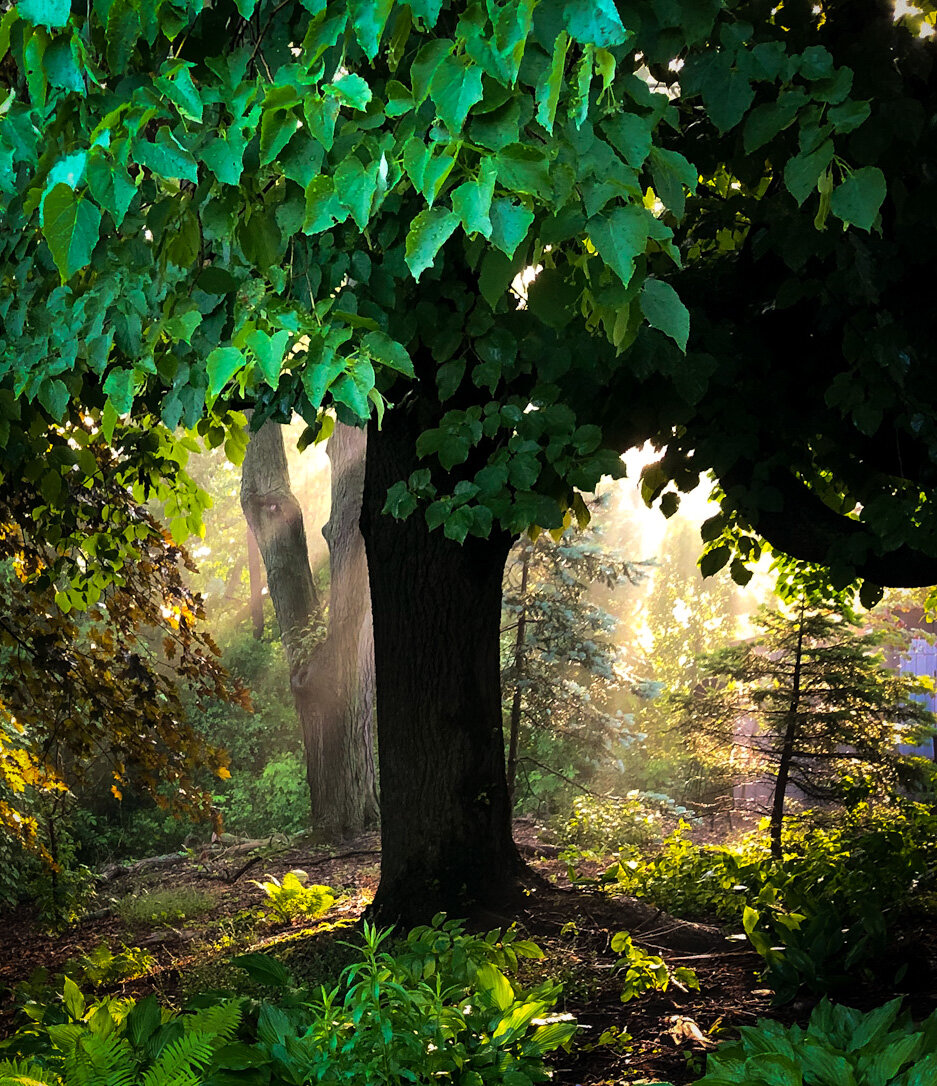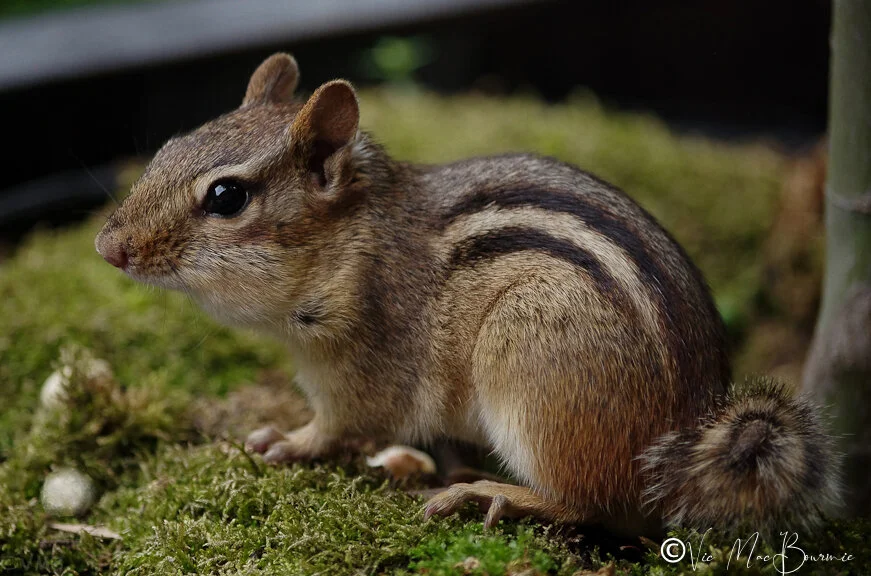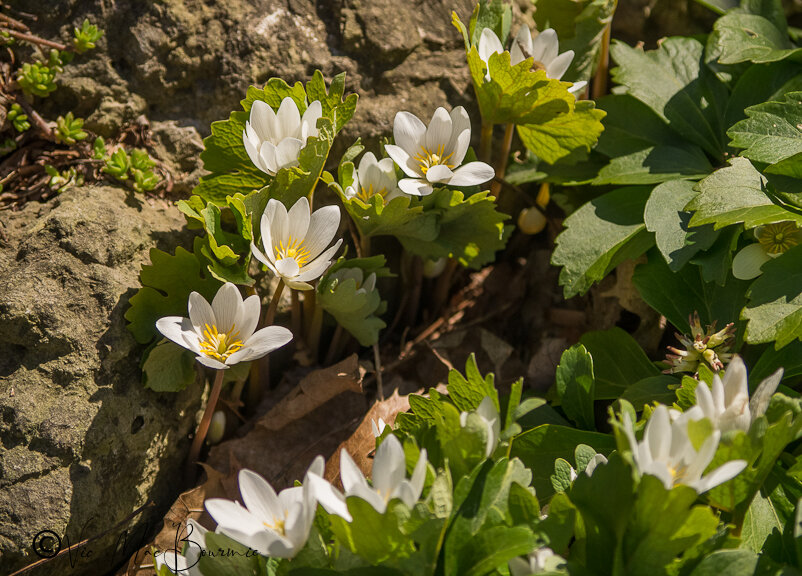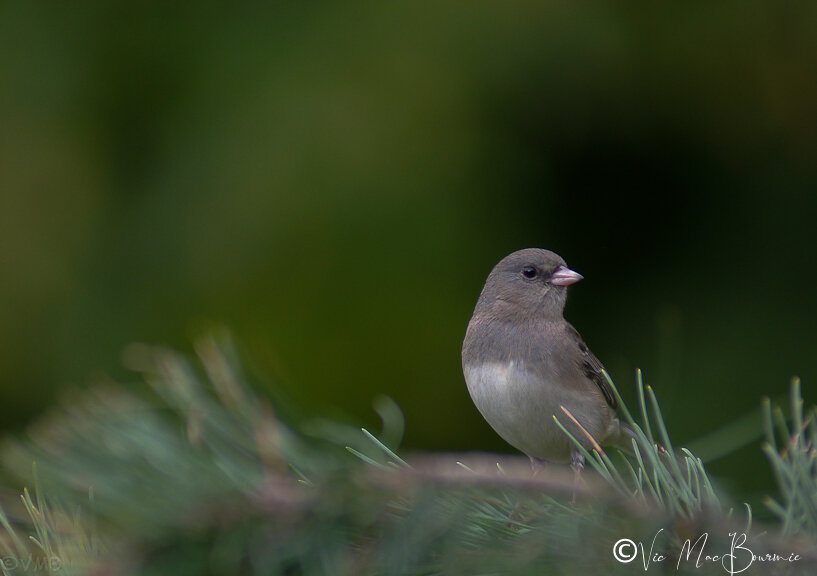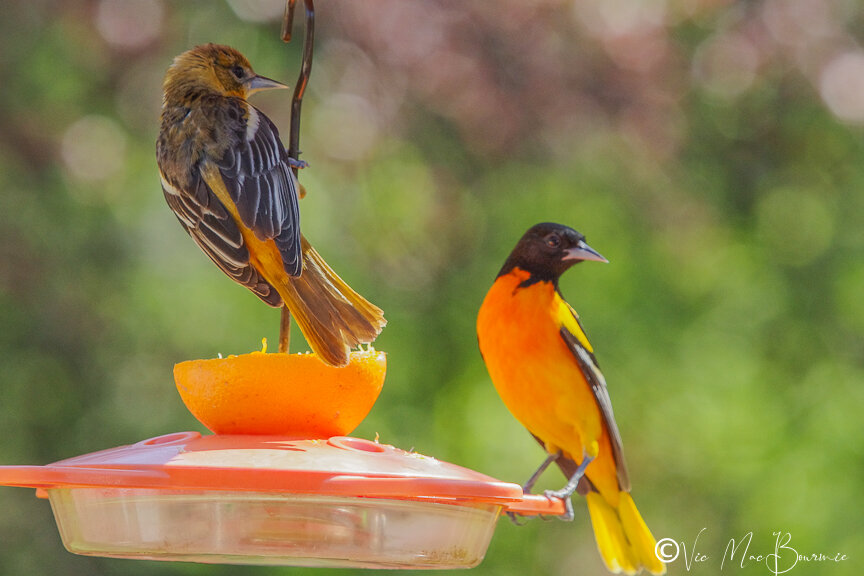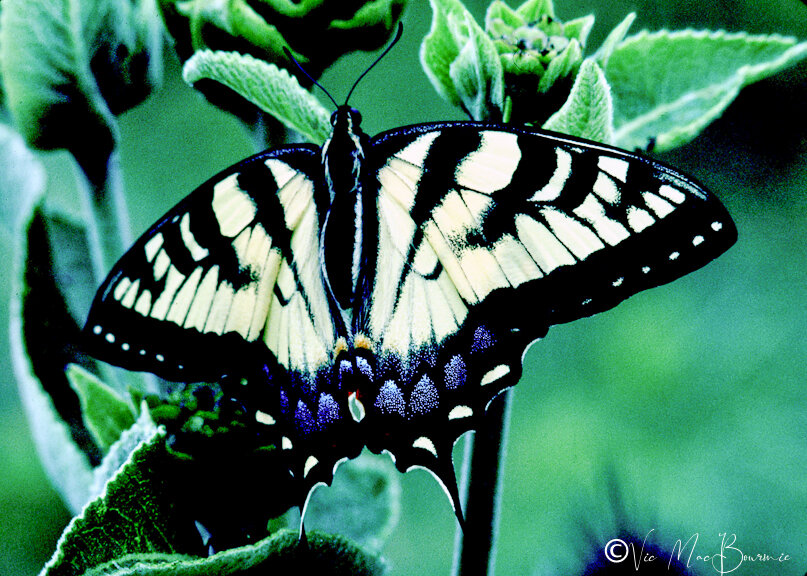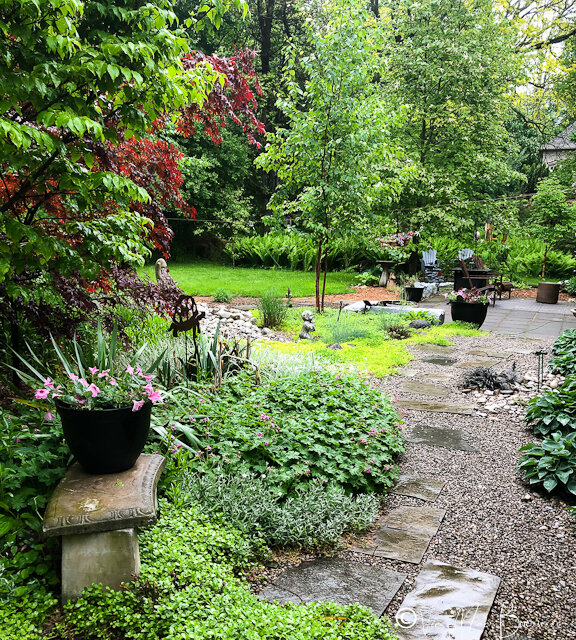How to design a woodland wildlife garden for a small yard
Backyard tips and ideas to design and rewild a small woodland garden
A woodland and wildlife garden is not measured by the number of trees or the size of your backyard.
Size certainly plays a role, but a woodland garden design has always been as much about an experience with nature as it is about a physical space.
My garden, for example, is not huge. I am lucky that it sits on about a half-acre lot in an urban area, but is surrounded by acres of woodland connected to a large conservation area.
How many of us have taken great joy sitting beneath a small tree in a natural woodland, birds flitting about busily searching for insects to feed their young?
Just imagine reliving that experience every spring in your own backyard landscape.
It’s an experience that can be created in a tiny backyard as easily as it can on a sprawling acreage property.
Can you create a woodland garden design in one of today’s typically compact backyards? Absolutely. Not only can you create a stunning woodland garden in a small backyard, in many ways rewilding a successful woodland design in today’s smaller yards is much easier. Use neighbouring trees as part of a borrowed landscape and as an upper canopy and then create your understory with a few smaller trees, and shrubs. Now, add an area of shade-loving plants and a woodland ground cover. A bench to enjoy the garden and you are well on your way.
“A way to make a small garden unusually satisfying is to focus on the stimuli reaching two or more of the senses simultaneously – and with equal intensity.”
The woodland garden can be a beautiful but natural retreat for gardeners looking for a low-maintenance garden.
Whether you do-it-yourself or hire a landscaping company, rewilding the smaller garden helps to focus the garden designer on what factors make up a woodland garden and how to create woodland vignettes (earlier post) within those small spaces.
If you are looking for more help in the process of building your woodland garden, you might want to check out the informative book The Woodland Garden by Robert Gillmore, who explains how to turn an existing woodland area into a low-maintenance, lush woodland garden that brings the world of nature into your own yard.
In addition, consider picking up The American Woodland Garden, by acclaimed author Rick Darke, Capturing the Spirit of the Deciduous Forest. It can be difficult to find, but is often available on the used market. Alibris, an U.S.-based used book seller, has copies of The American Woodland Garden for approximately $25 if readers are interested.
In a larger garden, too much focus is often put on just keeping up with garden chores to perfect the vignettes that make the woodland garden such a special place. A large garden may be made up of several smaller vignettes or garden rooms, while a smaller suburban garden may include just two garden rooms or vignettes and a tiny urban garden might incorporate only a single woodland garden vignette.
Landscape designer Angela den Hoed has taken a typical suburban backyard and created a magical woodland garden for readers of Ferns & Feathers.
Here at Ferns & Feathers we actually provide our readers with a highly detailed landscaping plan suitable for today’s typically-sized backyard. By simply following the design, readers can either create the woodland garden themselves or use the plan as part of a larger garden plan. For the complete details of the plan, including a list of native plants to consider, check out my post here.
This illustration shows the ideal layering in a woodland garden and the birds that take advantage of the different layers.
How to create and rewild your small yard into a wildlife garden
Unlike a typical or traditional garden, a woodland wildlife garden is primarily a shade garden. It’s important to note, however, that a shade garden is not necessarily a woodland garden. Within the woodland garden, there may be sunny borders or openings in the forest canopy that provide gardeners the opportunity to experiment with sun-loving plants.
It’s these openings that give gardeners an opportunity to plant native berry-producing shrubs for birds and native flowers for pollinators in the wildlife garden. The edges of the woodland also provide ideal areas to explore berry-producing shrubs and other plants that attract insects and provide nesting habitat for birds and small mammals.
A woodland garden’s primary feature is a layering effect. From the tallest trees in the upper canopy to the mid canopy of smaller shade loving trees, down to the shrubs, perennial flowers and finally to the ground-cover layer.
Below the ground cover is the all-important soil that gives life to insects, invertebrates and microbes that form the roots of our woodland garden’s success. (I explore the details of creating the ultimate woodland garden soil in other posts that will be linked to at the bottom of this post.)
Together, this combination engages our senses and let’s us know, even subconsciously, that we are in a special place.
If you are still unsure whether you want to create a woodland garden, consider that once the garden is designed and installed, it should be an extremely low-maintenance garden that requires very little effort on your part to keep it looking its best.
Why you might ask?
Why is a woodland garden considered low-maintenance
Chelsey garden show Gold medal award-winning garden designer Mary Reynolds’ explains it best in her book The Garden Awakening.
Consider her explanation about the land we are looking to build our gardens on: “Most land that is used for agriculture and gardens has the same core truth: it strives to become a mature woodland – a stable and intelligent ecosystem that has evolved over many thousands or even millions of years.”
In her book, The Gardening Awakening, Mary explains that: “Achieving a classic woodland ecosystem is impossible for most people because the individual plots of land are too small. However, it is possible to create a replica of a complete woodland ecosystem in smaller places. “
Mary argues that unless land stewards, such as ourselves, “allow the land to express its own truth, we are doing it an injustice.”
Not only are we doing it an injustice, we are also working against Mother Nature.
By working with nature, especially in a small garden where the amount of work is already more manageable, we create a very low-maintenance garden that more or less looks after itself and does not require hours of weeding, garden cleanup and lawn maintenance.
The design and creation of the small woodland garden requires a little more attention to detail.
To create a successful small woodland garden it becomes even more critical to maximize every opportunity to explore our senses. Garden designer Vince Healey, who specializes in creating gardens for children and hospices for the dying, points out that: “A way to make a small garden unusually satisfying is to focus on the stimuli reaching two or more of the senses simultaneously – and with equal intensity.” An example Healey provides is a stand of aspens blowing in a breeze. The rustle and the shimmer of the leaves appeal to both your sense of hearing as well as the visual beauty the stand of trees provide.
In my garden, similar to Healey’s aspen example, a stand of three clump birch trees form a canopy over a bubbling rock and dry river bed. The combination of the trees together with the sound and visual stimuli of seeing the water bubble out of the rock, works hard to appeal to a visitor’s multiple senses.
In a much smaller garden, this birch grove and bubbling rock underplanted with a tiny Japanese maple, maybe a native cranberry bush that flowers and provides a profusion of red berries in the fall, a container or small planting of annual or perennial flowers, and a ground cover of moss or thyme is enough to form a woodland garden in itself. Add a bench where you can sit under the canopy of birch, and you have recreated the memorable experience you had that spring day in the forest.
A simple garden path in our woodland garden made from pea gravel and square-cut flagstone. Simple materials and natural products are preferred.
Healey writes that this sensual stimuli appealing to more than one sense with equal intnesity: “has the effect of mesmerizing the viewer.” And, don’t we want all our visitors to be mesmerized by the beauty of our garden?
Because trees will form an important part of your compact woodland garden, it’s important to consider trees with the best bark features. Tree bark itself can appeal to so many senses. Birch trees, especially river birch (Betula nigra) with its subtle copper-coloured bark that peels profusely away from the trunk in shaggy strips, and European White birch (Betula pendula) that brings a touch of elegance with its stark white trunks and fine papery peeling bark, are good examples of trees that appeal to multiple senses. In a large garden, they could form part of the understorey. In a smaller woodland, they can take the place of the top canopy.
Other trees to consider for their bark features might include pine trees such as the Lace-bark pine (Pinus bungeana) with a wonderful mottled appearance. The bark flakes off to reveal patches of green, cream and red. Consider also the Scotch pine with its cinnamon brown bark and, of course, our native Northern White pine whose bark as a young tree is thin, greyish-green and smooth but gives way to a mature tree sporting thick bark with broad ridges and dark-tinged scales. Our white pine’s bark may not be the most exciting, but the tree’s other features make it a standout in any woodland garden. The blue-green needles are feathery soft with a heavenly aroma when crushed. The combination of the soft needles and strong aroma appeals to so many of our senses.
Beeches are known for their smooth, gray or shiny bark. Paperbark maples (acer griseum) are especially noteworthy as a small under storey tree with outstanding curling, papery strips of cinnamon brown bark. Few trees are more at home in the woodland garden than the flowering dogwood which, besides offering a profusion of outstanding white flowers or bracts followed by red fruit, also boasts an impressive bark with an amazing rectangular pattern on its trunk that looks almost reptilian. The Kousa dogwood has gray- and tan-patched bark. The bark combined with its profusion of cream flowers and outstanding red fruit in fall make it a show stopper in the woodland garden. I have several in our garden, despite the fact that it is no a native tree.
For more on native Dogwood trees and shrubs, be sure to check out our full story here on six of my favourite dogwoods for the woodland garden.
Few trees can compare to the Redbud, whether you choose multi-stem or single-stem versions, for its spectacular spring magenta flowers that cover its branches early in the season. For more on the outstanding Redbud tree (Cercis Canadensis), check out my full story here
Five important design elements of a woodland garden
1) Create at least one natural garden path that either takes you to a special place in the garden or leads visitors around and through it.
2) Strive to create multiple layers in your garden. The woodland garden requires an upper canopy of large shade trees, followed by a mid-canopy of under storey trees like dogwoods or serviceberries above a layer of mid- and small-size shrubs followed by ground covers and groupings of perennials.
3) Include natural-looking garden art. A large moss-covered boulder, an artistically twisted branch or a natural-looking stone bird bath. Alternatively, a copper bird house or bird bath can add an exquisite touch to your woodland and age gracefully along with the garden.
4) Always strive to use native woodland plants wherever possible. Not only do native trees, plants and shrubs look appropriate in the landscape, they usually perform at their best if they are planted in the right location. Even more importantly, they are hosts to native insects and pollinators that provide critical food to our native birds.
5) Use a variety of ground covers to ensure your soil is never exposed to direct sun. Protecting the soil is critical to building microbial life that will ensure it can provide your plants and trees with life-giving energy. Organic and non-organic mulches can take the place of living ground covers. (I will link to a separate post on using mulches at the bottom of this article.)
A subtle approach is best
It’s important to incorporate a subtle approach to woodland gardening. Nature is never gaudy. Although gardens appeal most strongly to our visual sense, the woodland gardener needs to take a step back and control the urge to create large swaths of violently coloured flowers to make a strong visual statement. Over doing this can easily end in a visual assault.
Nature rarely makes a visual assault, and neither should the woodland gardener.
Woodland gardeners need to take pleasure in the simple textures of leaves, subtle shades of green highlighted by the quiet colours of native wildflowers, grasses and sedges.
Angela den Hoed’s woodland garden landscape design incorporates a critical element that belongs in every woodland garden. It’s a path that takes visitors around and through the garden so they can experience its subtle beauty. In many traditional gardens viewers can afford to simply stand back and experience the riot of colour. The woodland, however, begs you to come inside and engage the senses in a very intimate way.
The value of the woodland path
In his book Landscaping with Nature, Using Nature’s Designs to plan your Yard, Jeff Cox writes about the woodland path and notes that a walk in the woods can be built into even small backyards.
“Walking down a woodland path is one of our favorite ways to enjoy nature. The path is usually shady, and we enjoy the cool, protective shade thrown by a canopy of trees… Interesting and beautiful plants on either side of us provide plenty to look at as we walk the path. Following the path is an adventure ; we never know what’s around the bend…. And as we walk, we have time to think, dream, or just listen to birds’ songs.”
The path itself does not have to be large. It should blend in to the natural landscape rather than drawing attention to itself. There is no place for concrete and even a more subtle brick pathway is probably unnecessary in the woodland.
A simple grass pathway cut occasionally throughout the summer, or a path made by putting down a thick layer of shredded cedar mulch or pine needles will provide a more natural pathway that is at home wandering and weaving through the woodland garden.
In a very small urban yard, the garden path could be the main feature of the entire backyard, taking the visitor from the home’s small patio and winding its way through the garden features to the back of the property. Along the way, you might have to walk around a clump serviceberry (Amelanchier laevis) underplanted with trilliums and irish or scotch moss. You may pass a small pond or, even simpler, a beautiful copper bird bath and garden seat that provides a quiet place for you to sit and take in the birds that have discovered your small oasis in the heart of the city.
Along the path in your woodland try to use native plants. In an Eastern United States, Southern Ontario (zones 5-7) path, Jeff Cox suggests planting a Scarlet oak, and underplant it with a bed of maidenhair ferns (Adiantum pedatum) or hay-scented ferns (Dennstaedtia punctilobula). He explains how the oak (the best tree to attract and provide habitat for insects, caterpillars and pupae vital for the survival of our native birds) will “provide partial shade for the ferns as it arches over them.”
This area could also be planted with spring bulbs for early spring colour adding that late colour will “take care of itself with the oak’s blazing scarlet red foliage.” Behind the oak, he suggest a tall high bush cranberry (viburnum trilobum), with its showy red berries in the fall.
On the left side of the path, Cox suggests planting an eastern hemlock (Tsuga canadensis) and white pine (pinus strobus). These two evergreens will provide a dark background for the foreground planting of birch trees and serviceberry (Amelanchier laevis). The birch bark and early spring flowers of the serviceberry will “glow against the evergreen background.”
Virginia bluebells (Mertensia virginica) planted among the birches and serviceberries will provide delightful flowers in the spring.
In other areas of the country, with different garden zones, these plants should be substituted with plants native to that zone.
Angela’s garden pathway in our second Naturally Native newsletter is quite different from Jeff Cox’s plan. It takes the visitor around the entire garden and offers quiet places among areas dedicated to childrens’ play and family gatherings.
The two designs are good examples of how small garden areas are not limited to a deck a patch of grass and a decrepit play structure in a corner of the yard.
With proper planning, we can create the low-maintenance garden of our dreams, whether we live on a large rural property surrounded by forests, or in a small urban or suburban garden surrounded by a sea of high-maintenance grass.
If you are considering creating a woodland garden, or simply converting an area of your existing garden into a woodland retreat, be sure to sign up for our free newsletter.
The newsletter focuses on attracting and photographing backyard birds using native plants in a woodland garden setting. In addition to providing readers with a detailed woodland garden design plan, the 13-page newsletter features a DIY article on creating a large, reflection pond/backyard photo studio that includes an epic hack of a common household product. In addition, we feature tips on feeding specific backyard birds and the tools needed to get up close and personal with our feathered friends. You can sign up at the bottom of the Ferns & Feathers home page.
Important links for the woodland gardener
Below, I have included a list of links for anyone who would like to further explore the information mentioned in the above article.
• In case you missed the link earlier, Landscape designer Angela den Hoed has designed a full-featured, detailed Woodland garden plan for Ferns & Feathers readers. Here is the link for a comprehensive design for a typically-sized woodland garden.
• Landscape designer Angela den Hoed. See my earlier post about her here. Go to her website here
• Chelsea Award winning garden designer Mary Reynolds. See my earlier post about her book here. Go to Mary’s popular website here where she promotes land stewards to create natural Arks to help protect and restore our natural environments.
• Earlier post on Garden mulch: organic vs non-organic. Link here to my earlier post.
• Earlier post to my favourite ground covers for the woodland garden. Link here to my earlier post
• Earlier post on using a local woodland as inspiration for the woodland garden design. Link here to my earlier post.
• Jeff Cox’s book Landscaping with Nature. Amazon link here
• An earlier post on Five great books for Woodland Gardeners. Link here for my earlier post.
• An earlier post on the book Bringing Nature Home about why Native plants are critical to saving our birds. See the link to my earlier post here.
• Another book definitely worth considering is The American Woodland Garden by Rick Darke. Amazon link here
This page contains affiliate links. If you purchase a product through one of them, I will receive a commission (at no additional cost to you). I try to only endorse products I have either used, have complete confidence in, or have experience with the manufacturer.

